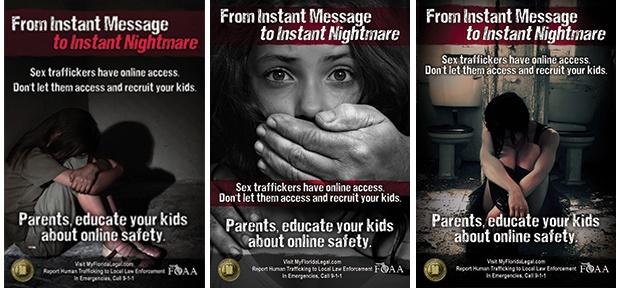
Whether it is due to better reporting or economic distress, the fact remains that human trafficking in the U.S. has been on the rise the past several years. According to the Polaris Project, an NGO focused on fighting human trafficking, this tragedy has increased five-fold since 2008. The National Human Trafficking Resource Center, one of Polaris Project’s initiatives, fielded approximately 24,000 complaints involving such crimes in 2014 — a 26 percent increase over the previous year.
Growing awareness has led to more legislation enacted by Congress over the past decade. And most states have laws on the books that in the Polaris Project’s view go beyond fighting trafficking and punish traffickers while assisting survivors. Of course, more can always be done to take on such human rights violations. To that end, Florida last year passed a law that makes the fight against human trafficking much more public.
As of Jan. 1, signs that intend to raise awareness of human trafficking are now required to be displayed at many public places and even some businesses across the Sunshine State. Florida H.B. 369, passed last April, has led to the distribution of signs that will list resources for human trafficking victims and numbers to report any suspicious activity.
Much of this work will be the responsibility of state agencies. Florida’s Department of Transportation will have to display this signs in facilities that the agency manages, including rest stops and welcome centers. Airports, truck stops, bus stations and light rail stations will also have to find wall space to display these signs. The health care industry is obligated under this new law as well: emergency rooms and urgent care centers will show these signs in public areas. Schools and libraries also are included in this new legislation.
Furthermore, these signs will now be a requirement at businesses where there is a likely chance human trafficking victims could be found. Massage parlors, strip clubs and “any establishment found to be a nuisance for prostitution” under other Florida statutes must post such notices, 8 ½ by 11 inches in size, in a “conspicuous location.” And in a nod to the fact that agriculture plays a significant role in human trafficking, any farm labor contractor within Florida must show these signs, too. Establishments that violate the law will be fined $500 for the first offense and $1,000 for each additional violation.
Will this make a difference? This problem is still often taboo here in the U.S., and for decades, laws have treated human trafficking victims as criminals instead of people who need support and assistance. Nevertheless, this law in Florida could help boost the public’s knowledge about this scourge that has ruined far too many lives before in fairness, they had even begun.
Image credit: Florida Attorney General’s office

Leon Kaye has written for 3p since 2010 and become executive editor in 2018. His previous work includes writing for the Guardian as well as other online and print publications. In addition, he's worked in sales executive roles within technology and financial research companies, as well as for a public relations firm, for which he consulted with one of the globe’s leading sustainability initiatives. Currently living in Central California, he’s traveled to 70-plus countries and has lived and worked in South Korea, the United Arab Emirates and Uruguay.
Leon’s an alum of Fresno State, the University of Maryland, Baltimore County and the University of Southern California's Marshall Business School. He enjoys traveling abroad as well as exploring California’s Central Coast and the Sierra Nevadas.














